17 Days Until Training Camp: Replacing No. 17
GREEN BAY, Wis. – There are two colliding realities as Green Bay Packers quarterback Aaron Rodgers adapts to life without Davante Adams.
One: Rodgers has never gone into a season without at least one established, big-time receiver. When he took over as the starter in 2008, he inherited Donald Driver and Greg Jennings. Eventually, Driver and Jennings turned into Jordy Nelson and Randall Cobb. The last few years, Rodgers leaned on the All-Pro Adams.
Two: Green Bay famously hasn’t used a first-round draft pick on a receiver since Javon Walker two decades ago but has made a killing in the second round with Jennings, Nelson, Cobb and Adams.
This offseason, general manager Brian Gutekunst traded Adams to the Las Vegas Raiders for first- and second-round draft picks. In the NFL Draft, Gutekunst traded his two second-rounders to the rival Vikings to zoom up to No. 34 overall to select North Dakota State’s Christian Watson. The hope – no, the expectation – is that Watson will become the Packers’ next great second-round receiver.
Nothing will be handed to Watson, though. Gutekunst took out some preemptive insurance by signing Sammy Watkins in free agency. The fourth pick of the 2014 draft might be more name than game at this point. In three of the last four seasons, he’s missed more games due to injuries than he’s scored touchdowns. His nine touchdowns the past four seasons would be a good couple months for Adams. Still, adding a veteran was a wise move so the team won’t be forced to play a rookie before he’s ready.
As Rodgers told The Pat McAfee Show this week: “Every year there’s opinions that start coming out about players in helmets and shorts, and I would say let’s everybody just take a nice, deep, long breath and trust the training camp time that we have, trust the coaching staff, trust the relationships that will continue to be formed, trust the guys in the room like Allen Lazard and Randall Cobb and Sammy Watkins to help these young guys out.”
The hope is Lazard, Watkins and Cobb will be good enough to keep the Rodgers-led passing game rolling until Watson is ready for prime time. Watson is a giant ball of potential. Of the 25 receivers who attended the Scouting Combine and were drafted, Watson was the tallest and the sixth-fastest.
“It’s early. I’m not going to make a lot of impression statements about them,” Rodgers said when asked about the rookie receivers during minicamp. “But the most important thing is the mental part right now. As much as there’s conversation around the importance of me being here and how much that means to the young guys, the most important thing for the young guys right now is to learn the offense.
“It’s early. I’m not going to make a lot of impression statements about them,” Rodgers said when asked about the rookie receivers during minicamp. “But the most important thing is the mental part right now. As much as there’s conversation around the importance of me being here and how much that means to the young guys, the most important thing for the young guys right now is to learn the offense.
The “offense that gets run on the field” is the offense that makes Rodgers and every other high-quality veteran quarterback so dangerous. As baseball legend Yogi Berra might have said, playing quarterback is 90 percent mental and the other half is physical.
Rodgers’ ability to diagnose the defense’s intentions and attack the weakness by switching to the perfect play or adjusting a receiver to a certain route with a subtle gesture is one reason why he’s a sure-fire, first-ballot Hall of Famer. Adams and Nelson were dominant forces because of years and years of chemistry with Rodgers. That chemistry was built through uncountable numbers of snaps during games, reps during practices and conversations in hallways between meetings.
Watson won’t have that when the season kicks off on Sept. 11 at Minnesota. He got a bit of a taste of what’s to come during the two minicamp practices. The real work will begin when the team hits the practice field for the first time of training camp on July 27.
“You’ve got to be on your Ps and Qs when 12’s out there,” Watson said. “He’s going to be making checks at the line and he’s going to be expecting you to be at a spot on time, so definitely just your head is spinning a little bit. But you’ve got to make sure you’re there, doing everything right, to be on the same page with him.”
Ditching that offense just to force-feed Watson 40 snaps per game probably isn’t the way to go, especially for a team with its eyes on the February prize. The hope is Watson (and fellow draft picks Romeo Doubs and/or Samori Toure) will be able to run the Rodgers version of the offense for the stretch run and playoffs so the offense can take flight for the most important games of the season.
Year-By-Year Receiver Corps for Aaron Rodgers
Throughout his career, Aaron Rodgers has had at least one established star on his receiver corps. That will not be the case in 2022 following the trade of Davante Adams. Here is a look at the top returning receivers for each of Rodgers' seasons as the starter.
2008
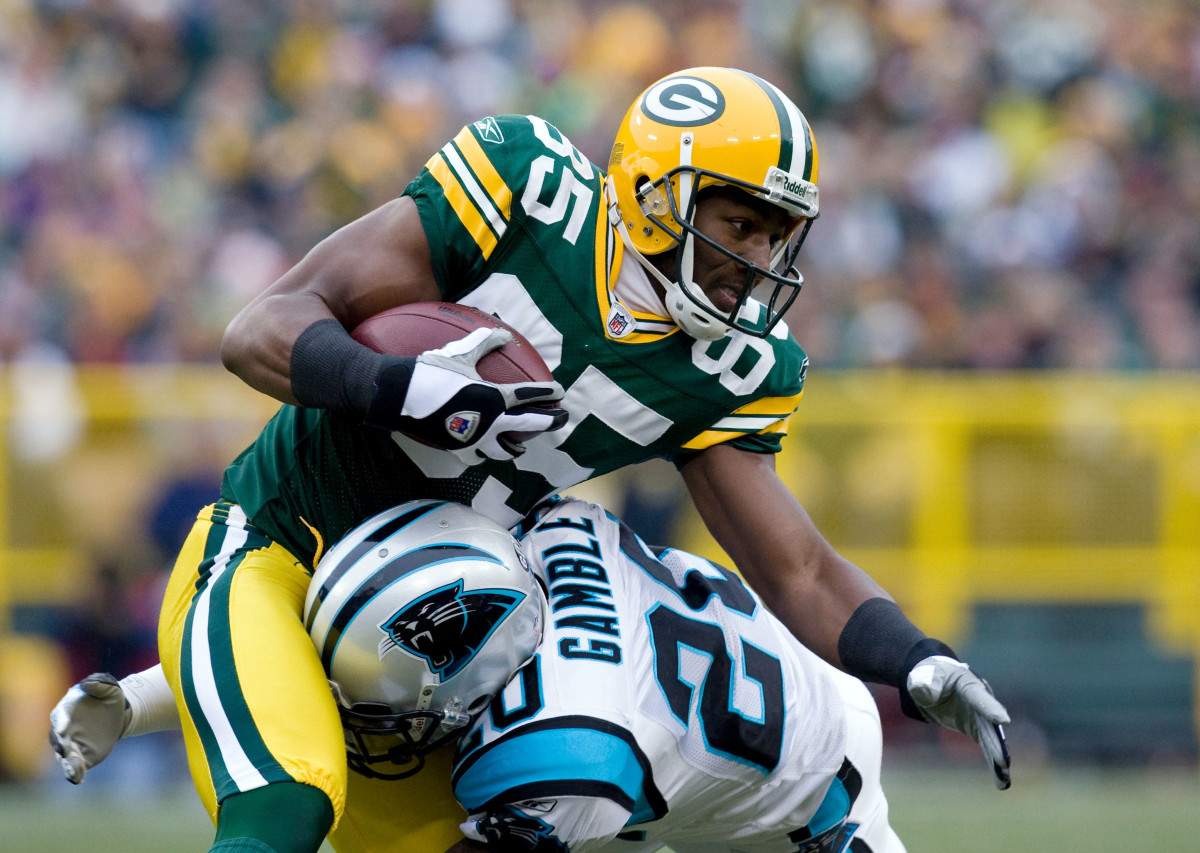
Greg Jennings (25 years old): 80 receptions, 1,292 yards, 9 TDs. A second-round pick in 2006, this was Jennings’ third season in the NFL. After catching 53 passes for 920 yards and 12 touchdowns in 13 games in 2007, he was on his way to becoming a star at this point in his career.
Donald Driver (33); 74 receptions, 1,012 yards, 5 TDs. A three-time Pro Bowler, this was Driver’s 10th season in the NFL and his fifth consecutive season of 1,000-plus yards.
James Jones (24): 20 receptions, 274 yards, 1 TD. A third-round pick in 2007, this was Jones’ second season. Jones was a key player as a rookie with 47 receptions for 676 yards and two touchdowns.
Of note: The Packers used a second-round pick on Jordy Nelson, and he contributed 33 receptions for 366 yards and two scores.
2009
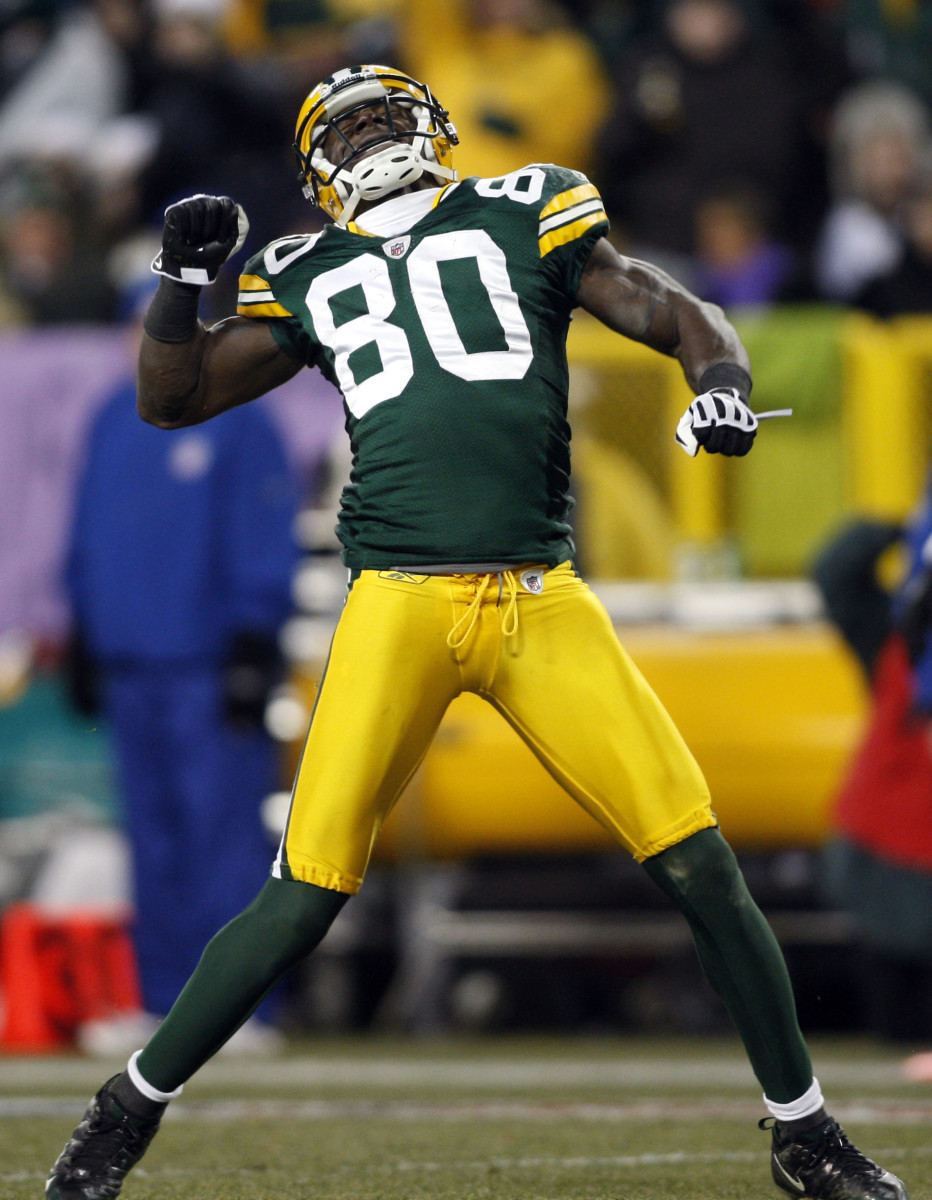
Driver (34): 70 receptions, 1,061 yards, 6 TDs.
Jennings (26): 68 receptions, 1,113 yards, 4 TDs.
TE Jermichael Finley (22): 55 receptions, 676 yards, 5 TDs.
Jones (25): 32 receptions, 440 yards, 5 TDs.
Nelson (24): 22 receptions, 320 yards, 2 TDs.
Of note: This was Driver’s sixth consecutive season topping 1,000 yards. Driver and Jennings formed one of only four receiver duos to each top 1,000. Meanwhile, Finley, a third-round pick in 2008, took a big step forward after catching only six passes as a rookie.
2010
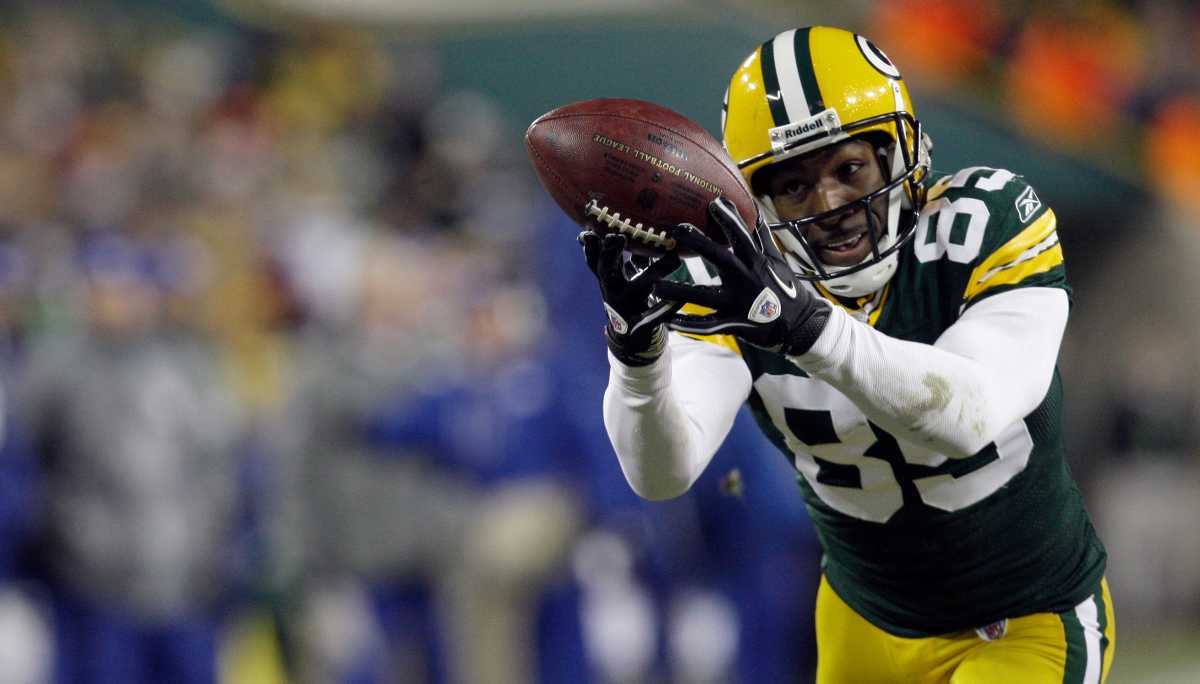
Jennings (27): 76 receptions, 1,265 yards, 12 TDs.
Driver (35): 51 receptions, 565 yards, 4 TDs.
Jones (26): 50 receptions, 679 yards, 5 TDs.
Nelson (25): 45 receptions, 582 yards, 2 TDs.
Of note: Jennings officially became the clear-cut No. 1 receiver and earned his first Pro Bowl with his third consecutive season of 1,100-plus yards. It was a solid third season for Nelson, but it was the postseason where he took the league by storm and set the stage for the rest of his career. He caught eight passes at Atlanta and then had a monster Super Bowl with nine catches for 140 yards and one touchdown.
2011
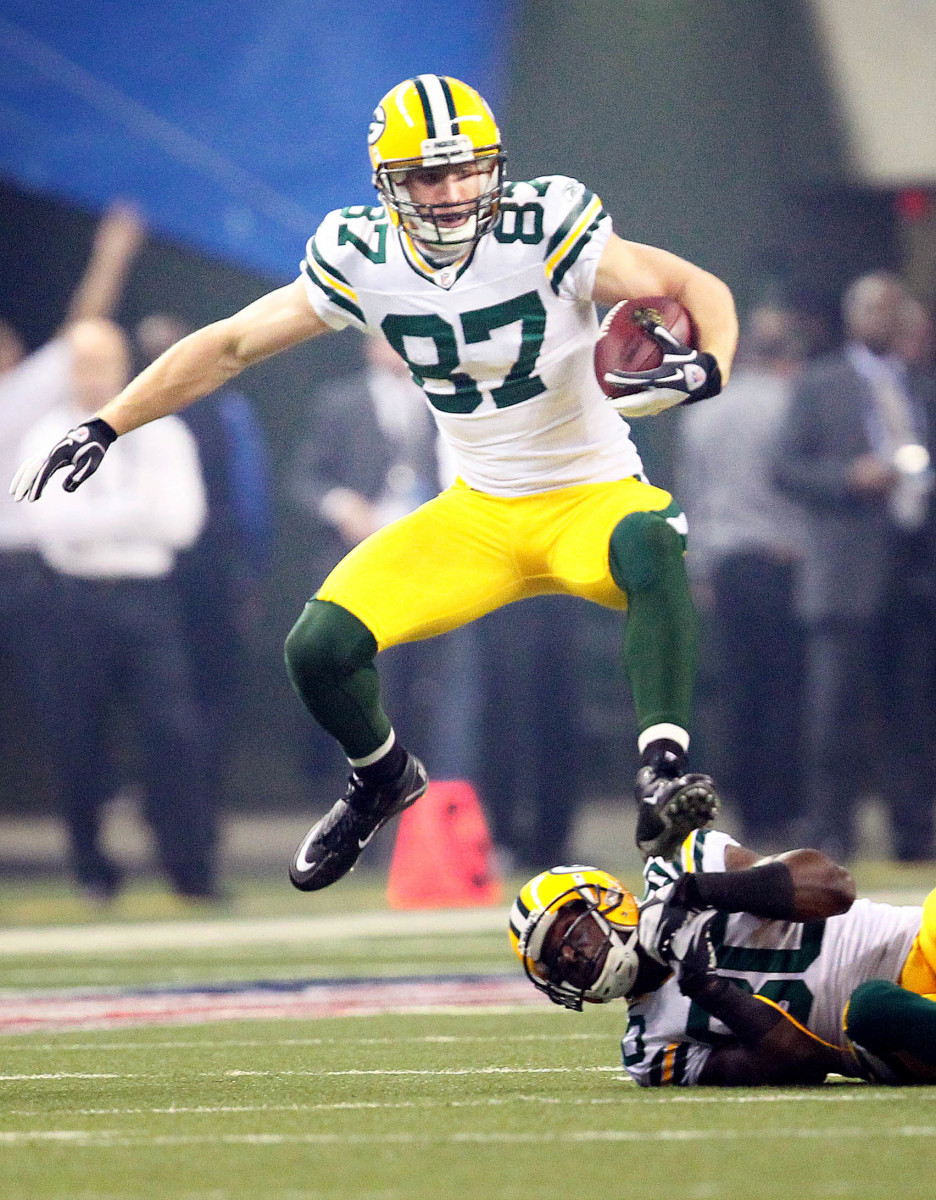
Nelson (26): 68 receptions, 1,263 yards, 15 TDs.
Jennings (28): 67 receptions, 949 yards, 9 TDs.
Finley (24): 55 receptions, 767 yards, 8 TDs.
Jones (27): 38 receptions, 635 yards, 7 TDs.
Driver (36): 37 receptions, 445 yards, 6 TDs.
Of note: The Packers scored what was at the time the second-most points in NFL history. This star-studded group of pass catchers had a huge hand in the success. This would be the first of Nelson’s four seasons of 1,200-plus receiving yards. He ranked third in the NFL in touchdowns and fifth with 18.6 yards per catch. Jennings was picked for his second Pro Bowl, Finley returned from a knee injury to have a big season, and Jones scored seven times without starting a single game. Five players caught at least six touchdown passes. Randall Cobb, a second-round pick, chipped in 25 catches. This offense was so powerful that he ranked only seventh in receptions.
2012
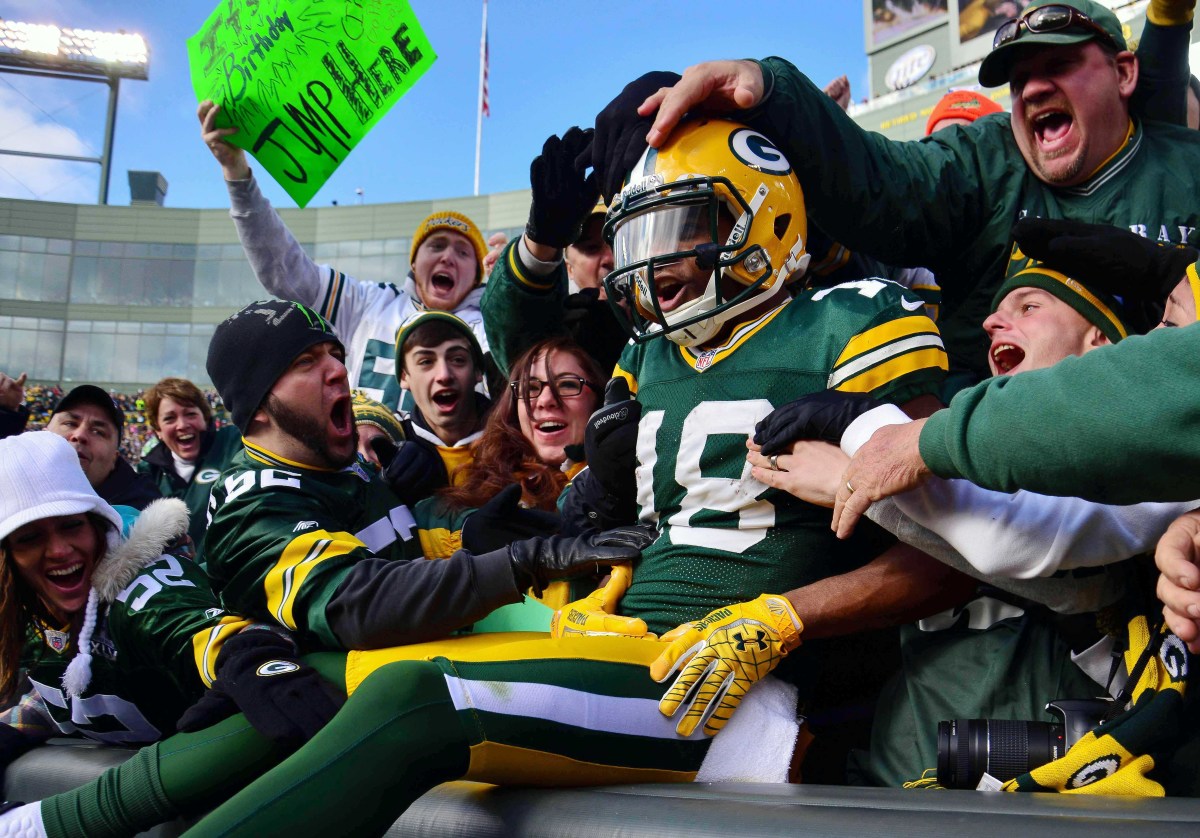
Cobb (22): 80 receptions, 954 yards, 8 TDs.
Jones (28): 64 receptions, 784 yards, 14 TDs.
Finley (25): 61 receptions, 667 yards, 2 TDs.
Nelson (27): 49 receptions, 745 yards, 7 TDs.
Jennings (29): 36 receptions, 366 yards, 4 TDs.
Of note: With injuries limiting Nelson to 12 games and Jennings to eight, it was Cobb, Jones and Finley to the rescue. After the season, Jennings signed with the Vikings.
2013
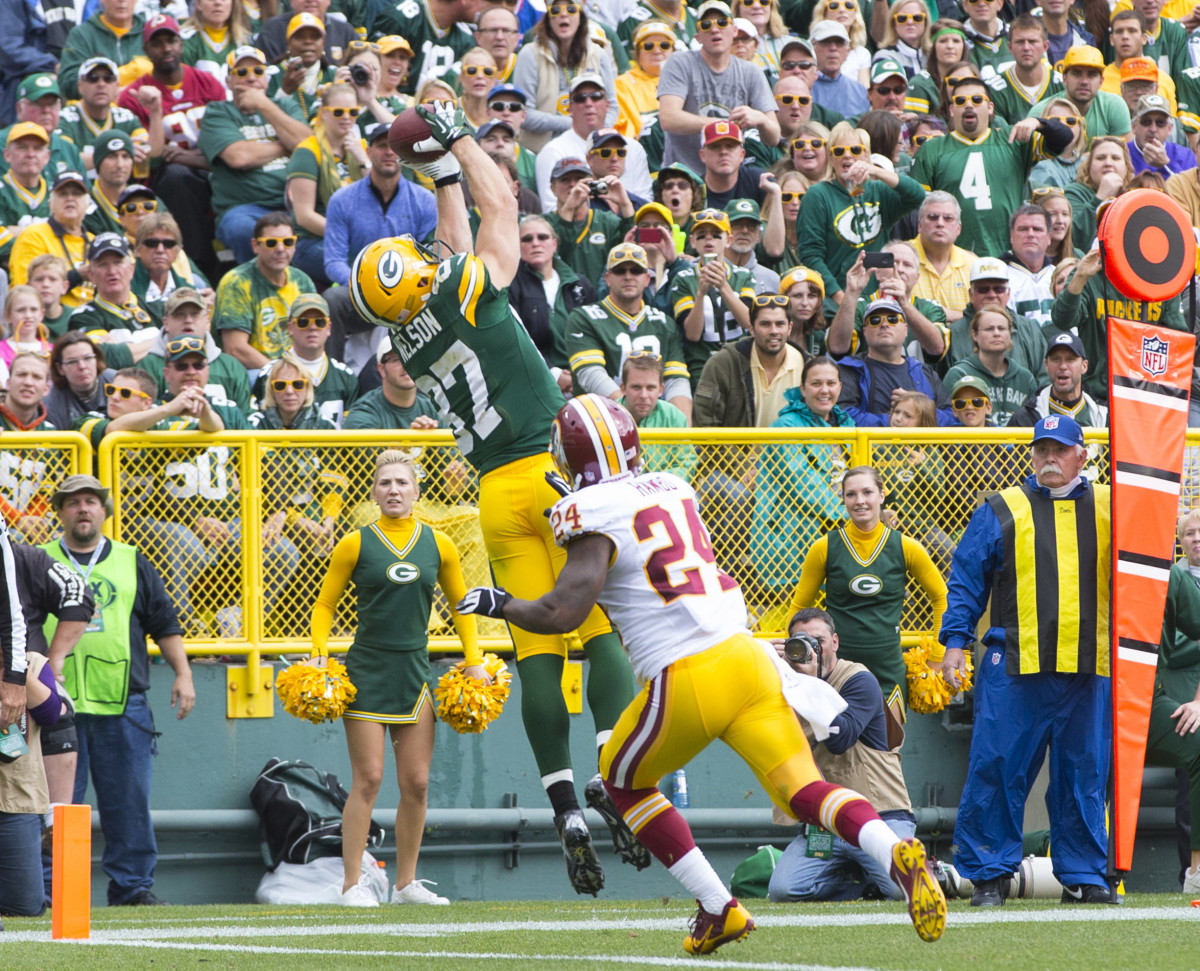
Nelson (28): 85 receptions, 1,314 yards, 8 TDs.
Jones (29): 59 receptions, 817 yards, 3 TDs.
Of note: This was one of Rodgers’ more challenging seasons. With Jennings playing for the Vikings and injuries limiting Cobb and Finley to six games apiece, Rodgers was no longer surrounded by a star-studded cast. Jarrett Boykin, a former undrafted free agent, picked up the slack with 49 catches for 681 yards and three scores.
2014
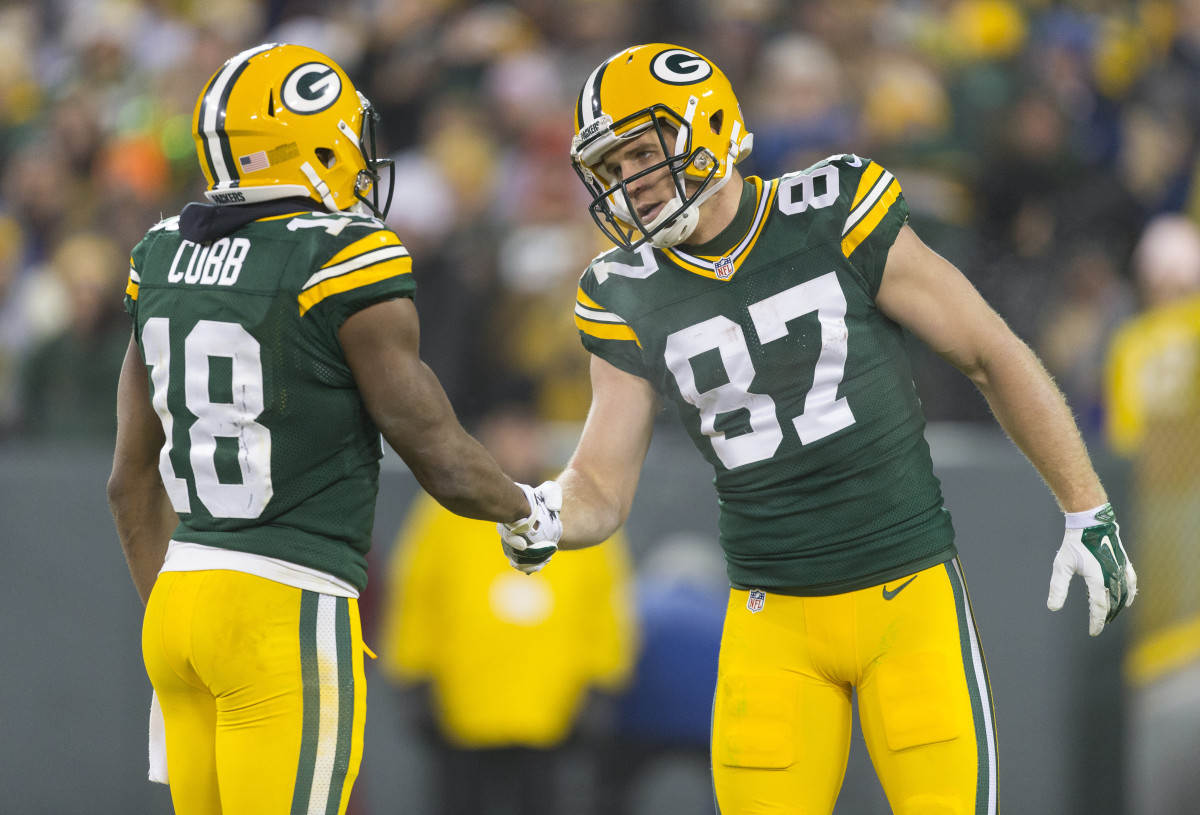
Nelson (29): 98 receptions, 1,519 yards, 13 TDs.
Cobb (24): 91 receptions, 1,287 yards, 12 TDs.
Of note: This would be Nelson’s one and only Pro Bowl season. He ranked fourth in the league in yards, seventh in yards and second in touchdowns. This also would be Cobb’s one and only Pro Bowl season. It also marked his only season of more than 80 receptions, 1,000 yards and double-digits touchdowns.
With Nelson and Cobb combining for 25 of Rodgers’ 38 touchdowns, the passing game was boosted by running back Eddie Lacy (42 catches), tight ends Andrew Quarless and Richard Rodgers (combined 49 receptions) and a second-round rookie named Davante Adams. As the No. 3 receiver, Adams caught 38 passes for 446 yards and three scores. It was a quiet rookie season with two hugely noteworthy exceptions. Adams had 121 yards in a showdown vs. New England and 117 yards in a playoff win vs. Dallas.
2015
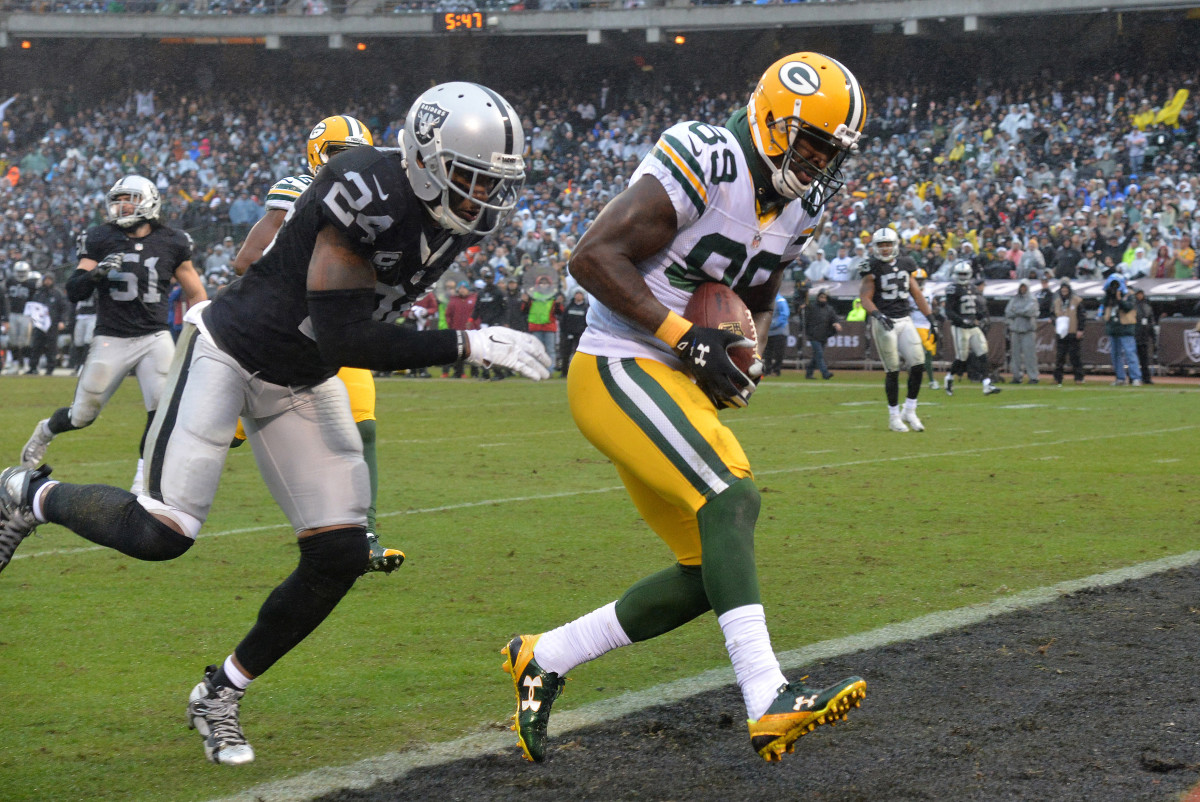
Cobb (25): 79 receptions, 829 yards, 6 TDS.
R. Rodgers (23): 58 receptions, 510 yards, 8 TDs.
Adams (23): 50 receptions, 483 yards, 1 TD.
Jones (31): 50 receptions, 890 yards, 8 TDs.
Of note: You can’t win a Super Bowl in the preseason. But you can lose one. In a preseason game at Pittsburgh, Nelson suffered a torn ACL and missed the rest of the season. Between the season-long absence of Nelson and an ankle injury that ruined Adams’ season, the Packers got to the playoffs but weren’t a threat. In the divisional-round loss to Arizona, Rodgers was left with Jones, Jeff Janis and Jared Abbrederis as his receivers after a mic’d-up Cobb was injured early in the game.
2016
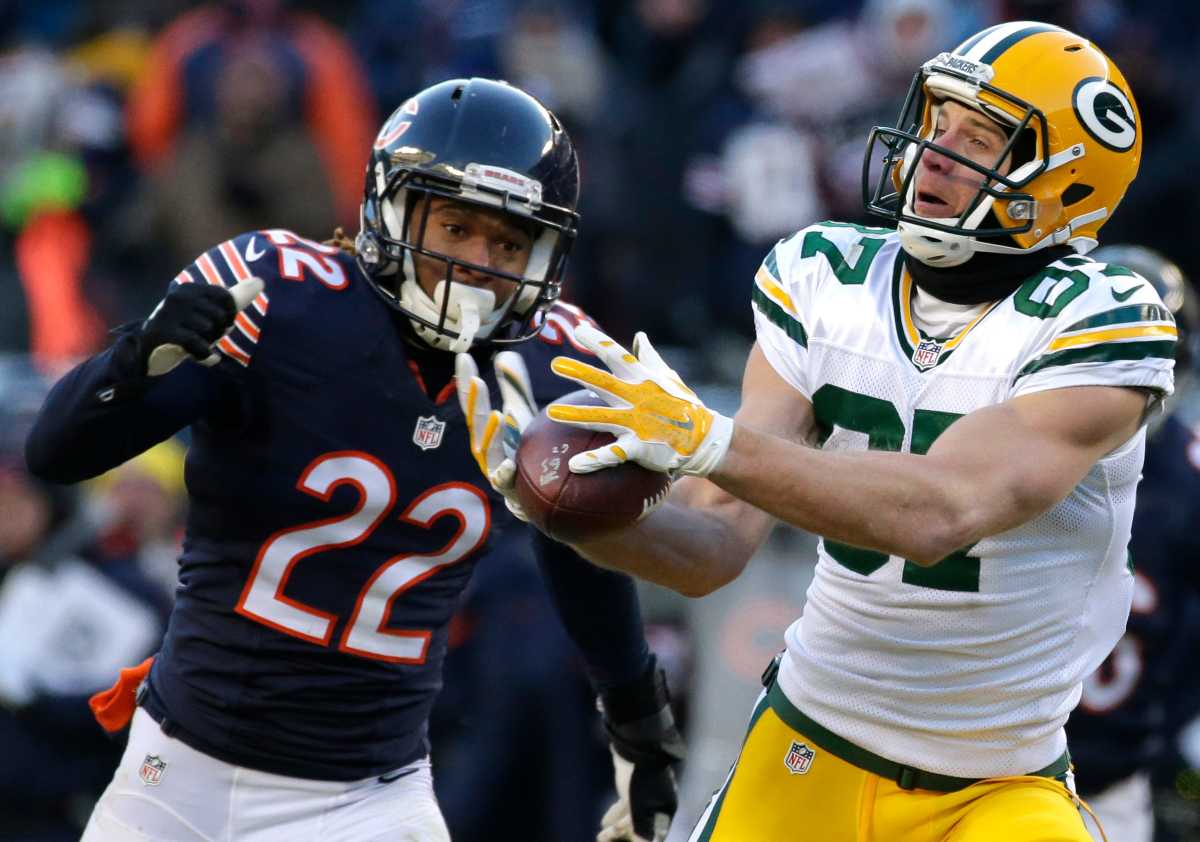
Nelson (31): 97 receptions, 1,257 yards, 14 TDs.
Adams (24): 76 receptions, 997 yards, 12 TDs.
Cobb (26): 60 receptions, 610 yards, 4 TDs.
TE Jared Cook (29): 30 receptions, 377 yards, 1 TD.
Of note: Nelson returned from his knee injury in a big way and Adams was one of the NFL’s breakout stars. However, with Nelson nursing broken ribs and Adams hobbled by a knee injury, they didn’t stand a chance in the NFC title game at Atlanta.
2017
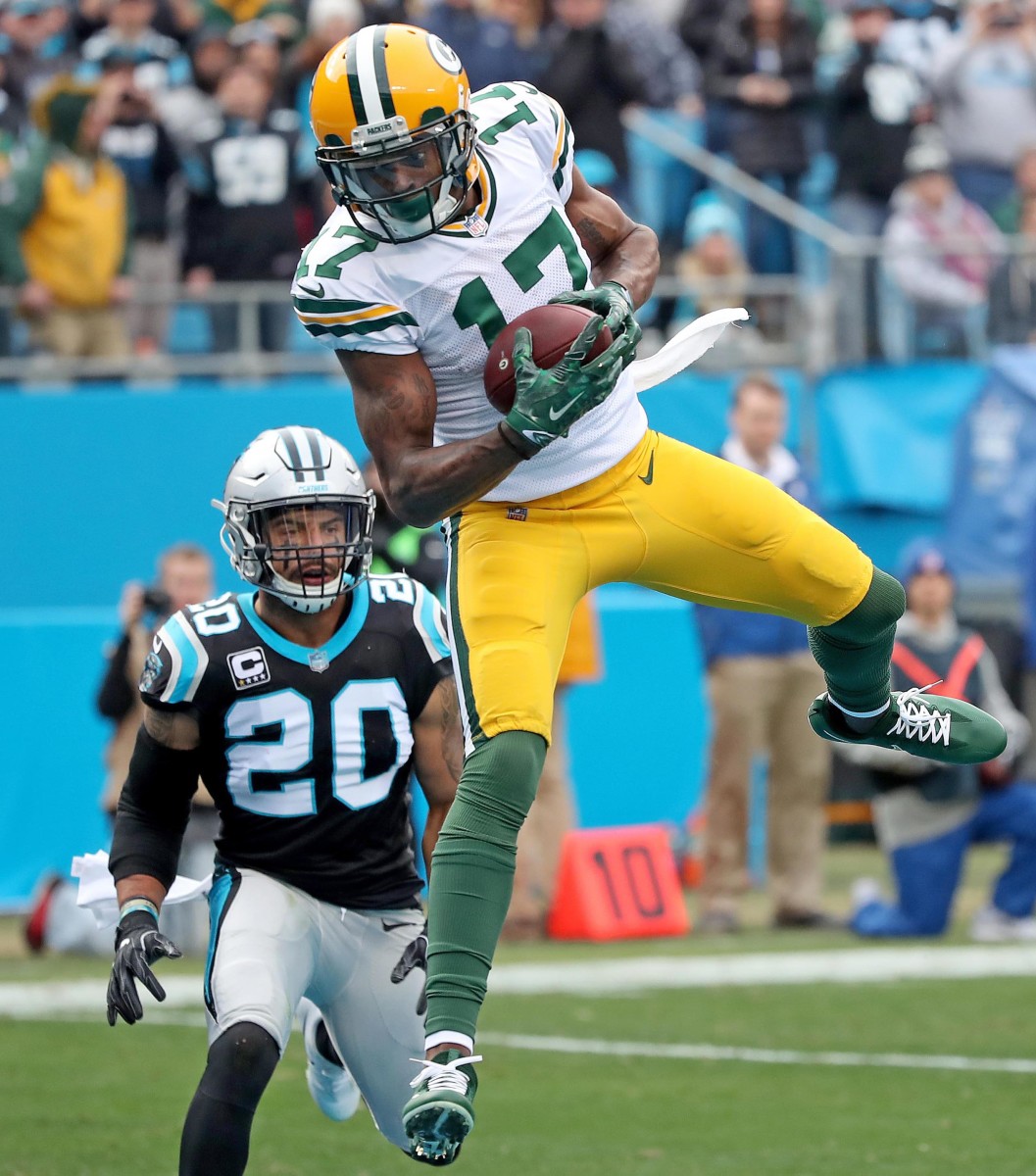
Adams (25): 74 receptions, 885 yards, 10 TDs.
Cobb: 66 receptions, 653 yards, 4 TDs.
Nelson: 53 receptions, 482 yards, 6 TDs.
Of note: After three seasons in a complementary role, the baton was passed to Adams as the No. 1 receiver. With Rodgers missing half the season with a broken collarbone, Nelson and Cobb both averaged less than 10 yards per catch. High-profile free-agent tight end Martellus Bennett was released at midseason, apparently with a shoulder injury, though a few teammates thought he quit because Rodgers was out.
2018
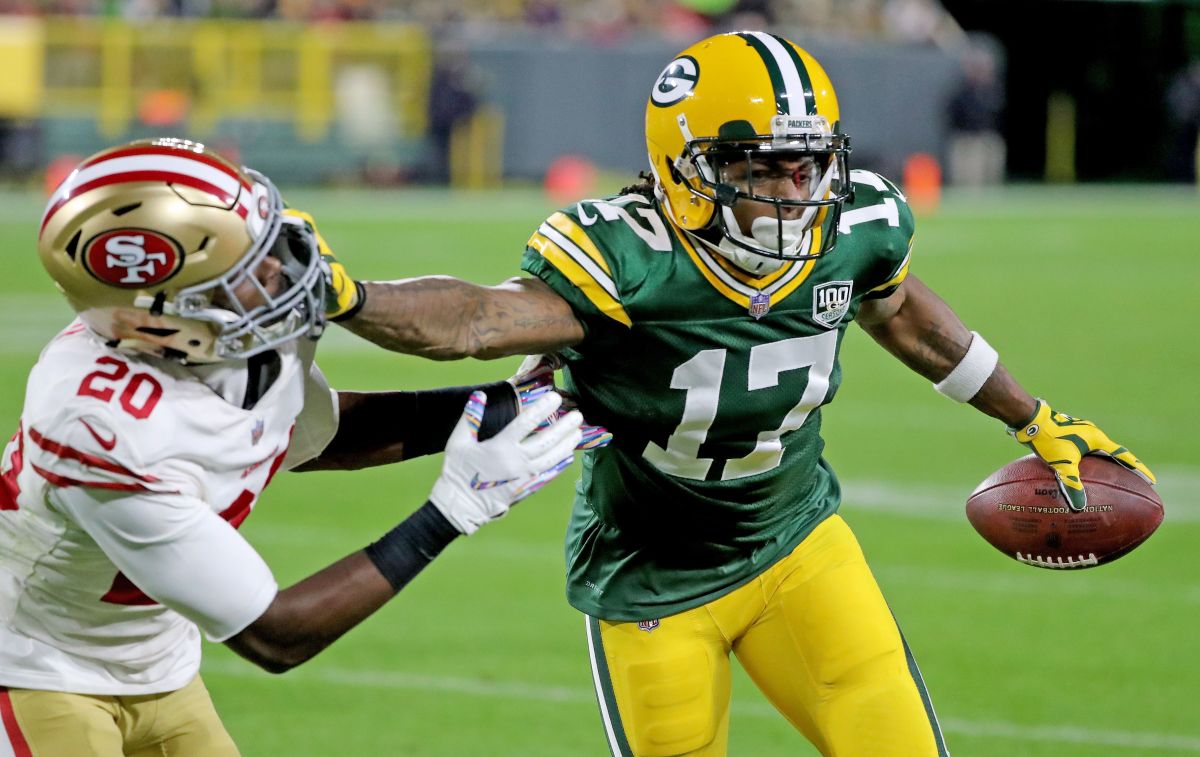
Adams: 111 receptions, 1,386 yards, 13 TDs.
TE Jimmy Graham: 55 receptions, 636 yards, 2 TDs.
Of note: Adams earned his first Pro Bowl accolades after finishing sixth in receptions, seventh in yards and second in touchdowns. In a transaction involving two past-their-prime players, the Packers released Nelson to sign Graham, who was merely OK. Cobb played in only nine games due to injuries and tied for third with 38 receptions. Rookies Marquez Valdes-Scantling (38 catches) and Equanimeous St. Brown (21 catches) were forced into duty.
2019
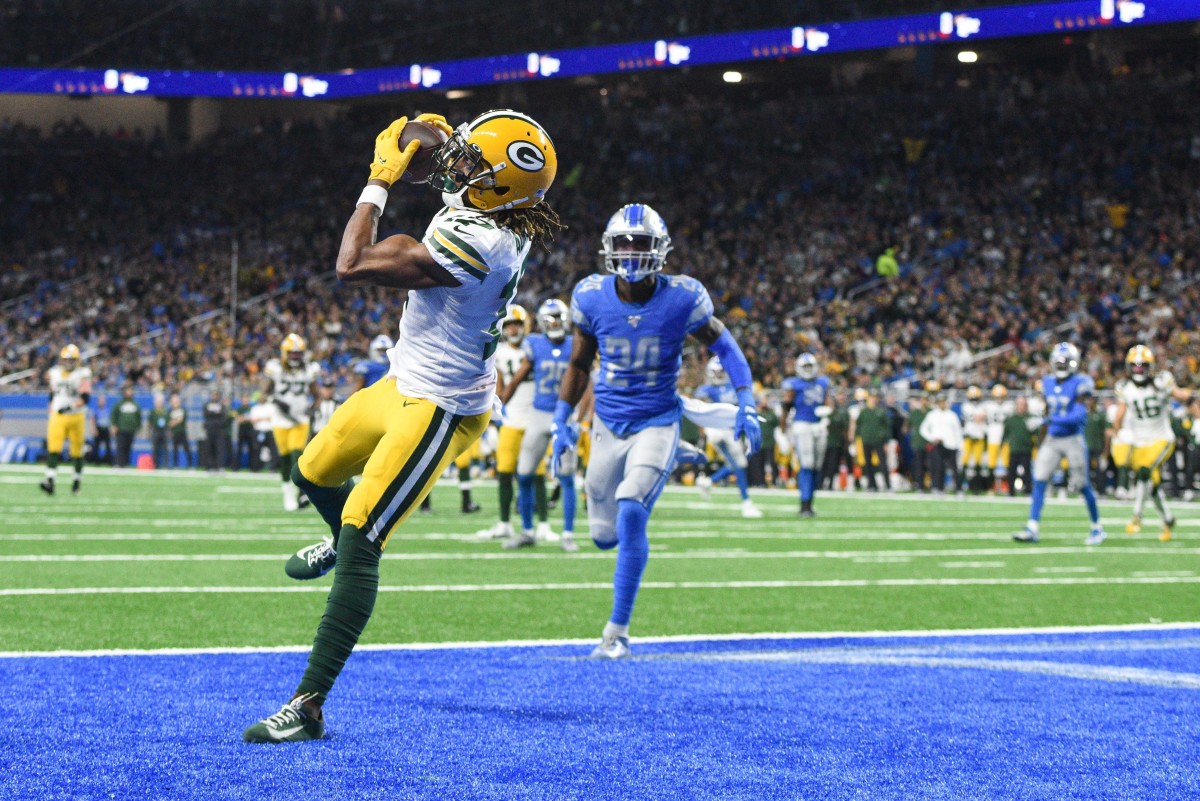
Adams: 83 receptions, 997 yards, 5 TDs.
Graham: 38 receptions, 447 yards, 3 TDs.
Of note: The Packers got to the NFC Championship Game in Year 1 under Matt LaFleur but it wasn’t because of the passing offense. Aaron Jones (49 receptions) and Jamaal Williams (39) finished second and third on the team in receptions. Graham was fourth and former undrafted free agent receivers Allen Lazard (35) and Geronimo Allison (34) were fifth and sixth.
2020
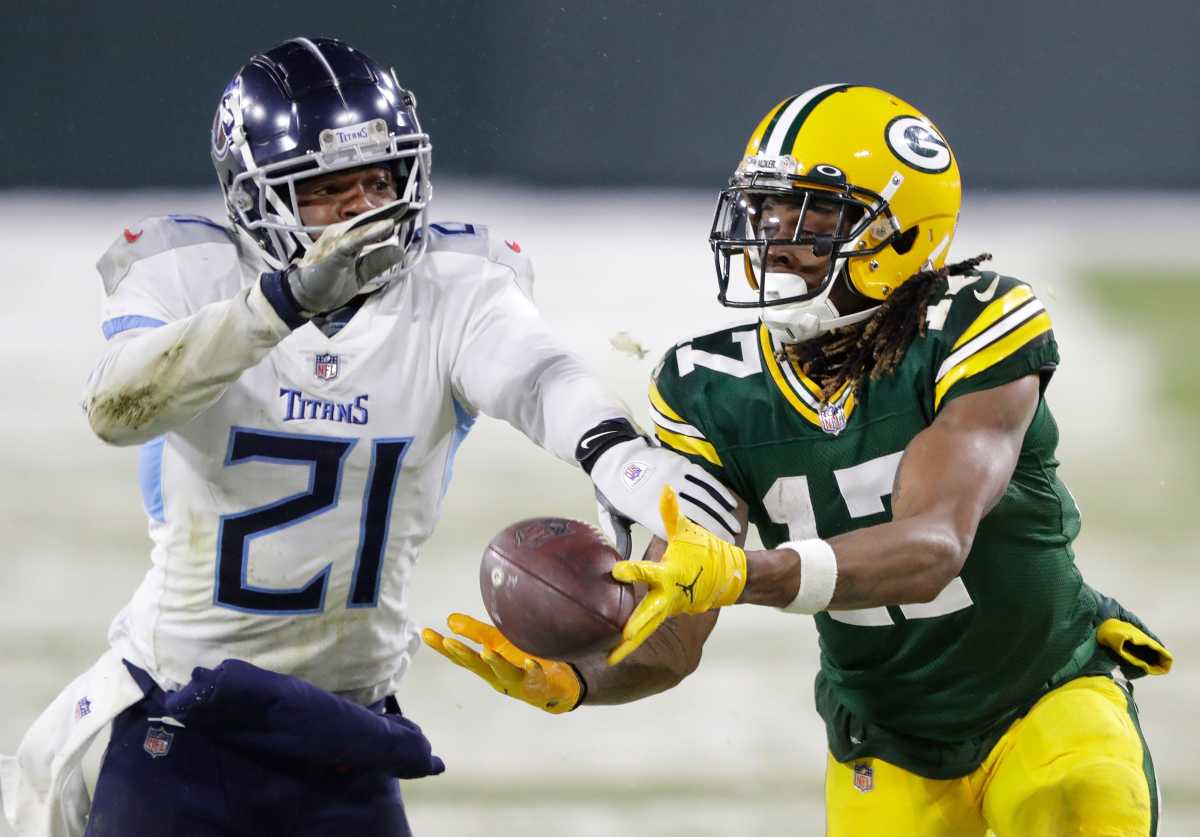
Adams: 115 receptions, 1,374 yards, 18 TDs
Valdes-Scantling: 33 receptions, 690 yards, 6 TDs (league-high 20.9 yards per catch).
Lazard: 33 receptions, 461 yards, 3 TDs.
Of note: Tight end Robert Tonyan was one of the NFL’s huge surprises with 52 receptions for 586 yards and 11 touchdowns. He tied Travis Kelce for No. 1 among tight ends in touchdowns and was No. 1 outright in catch percentage and drops (zero). Adams had 63 more catches than Tonyan and 684 more yards than MVS, the team’s second-ranked players in those departments.
2021
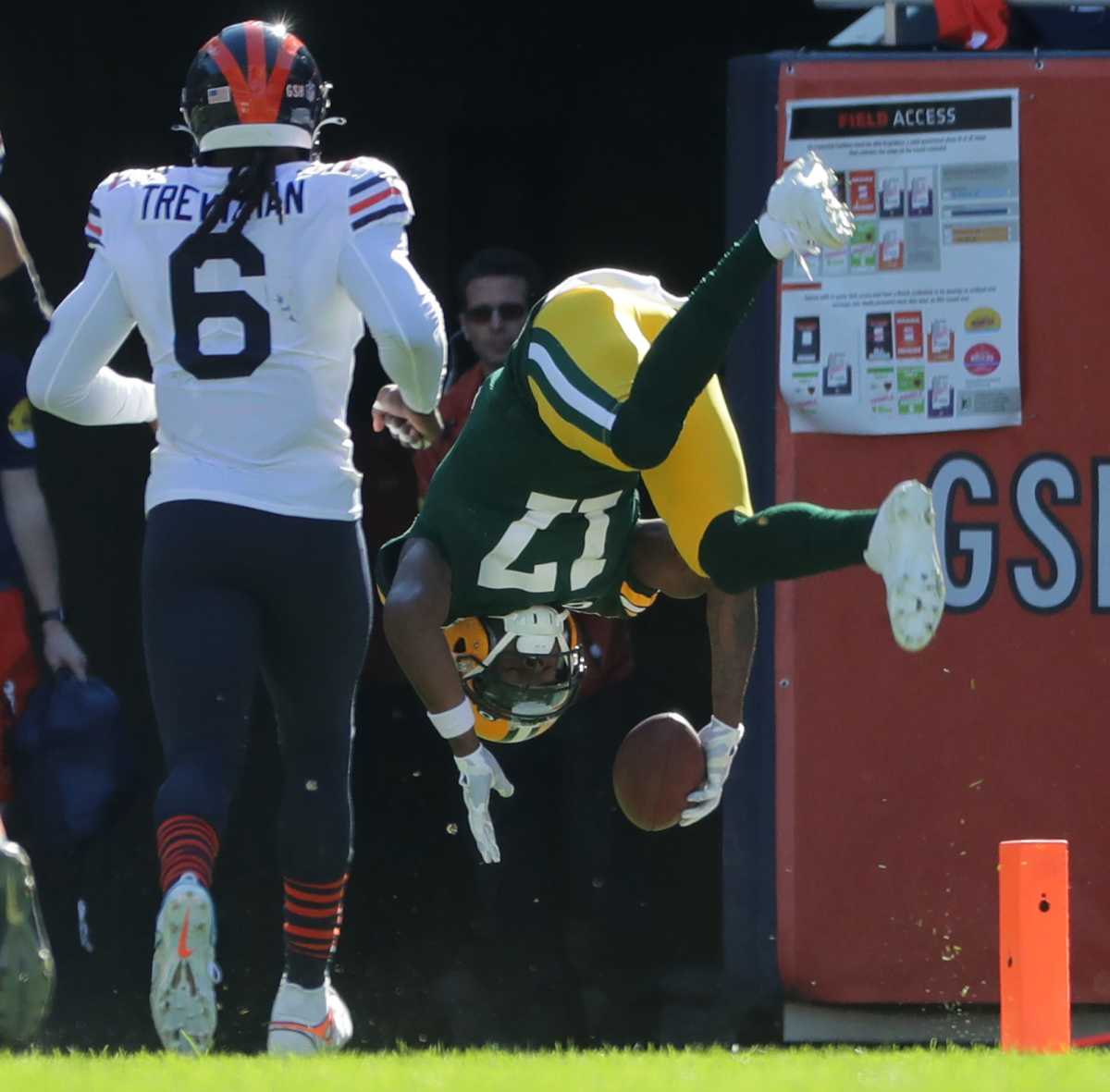
Adams: 123 receptions, 1,553 yards, 11 TDs.
Jones: 52 receptions, 391 yards, 6 TDs.
Lazard: 40 receptions, 513 yards, 8 TDS.
Of note: Talk about a one-man receiver corps. Adams had 123 receptions; the next three players (Jones, Lazard and running back AJ Dillon) combined for 126. Adams had 1,553 receiving yards; the next three players (Lazard, Valdes-Scantling and Jones) combined for 1,334. It didn’t help that Tonyan missed nine games, Valdes-Scantling missed six and Cobb missed five.
2022 (current roster)
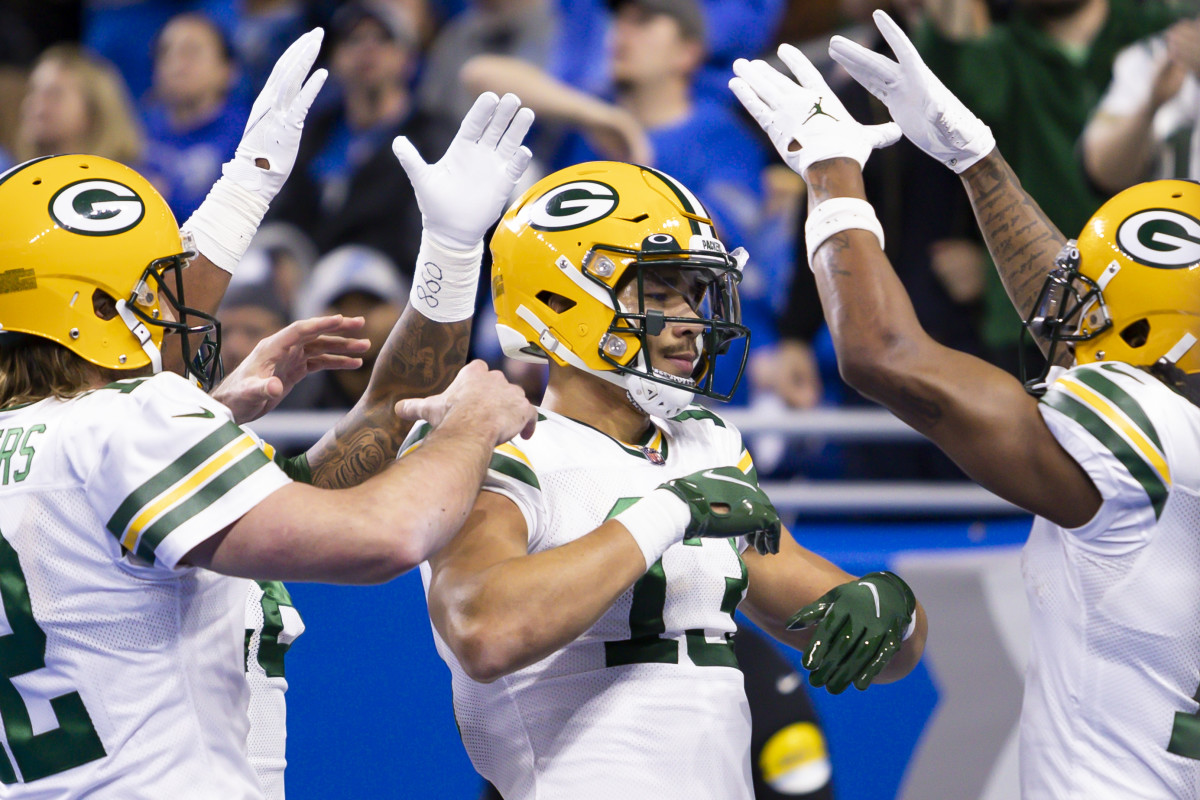
Cobb: 591 receptions, 7,168 yards, 52 TDs in 11 seasons but 64 receptions, 816 yards, 8 TDs the past two years.
Sammy Watkins: 348 receptions, 5,059 yards, 34 TDs in eight seasons but he’s scored only nine touchdowns while missing 16 games the past four seasons. He caught 37 passes in 10 games with Patrick Mahomes and the Chiefs in 2020 and 27 passes in 13 games with Lamar Jackson and the Ravens in 2021.
Lazard: 108 receptions, 1,441 yards, 14 TDs the past three seasons. He scored eight touchdowns in 2021. Over the final five games, only Adams caught more touchdown passes than Lazard.
Malik Taylor: 7 receptions, 80 yards, 1 TD in two seasons.
Juwann Winfree: 8 receptions, 58 yards, 0 TDs in three seasons. That came last season, when he also had two fumbles and one drop.
Amari Rodgers: 4 receptions, 45 yards, 0 TDs in one season.
Of note: Lazard has two 100-yard games (one in 2019, one in 2020) and Cobb hasn’t had any since 2019.
In 2011, when Rodgers was surrounded by the most ridiculous group of pass targets of his career, he had three second-round picks (Jennings, Nelson and Cobb), two third-round picks (Jones and Finley) and a three-time Pro Bowler (Driver) to catch passes. Now, he has a declining former first-round pick (Watkins), a past-his-prime former second-rounder (Cobb), an unproven third-rounder (Amari Rodgers) and a couple undrafted free agents led by Lazard.
Because of Rodgers and Adams, the Packers have not used a lot of resources on the receiver position. That necessarily changed this offseason with the signing of Watkins and the addition of three draft picks, led by second-rounder Christian Watson. How those newcomers develop will determine whether Rodgers ever wins a second Super Bowl.
Countdown to Packers Training Camp
Get ready for July 27, the first practice of training camp, with this unique series of features.
Part 1 (30 days): All Matt LaFleur does is win (in the regular season)
Part 2 (29 days): Dominant Rasul Douglas
Part 3 (28 days): Aaron Jones and AJ Dillon
Part 4 (27 days): 27 is the magic number
Part 5 (26 days): Rich Bisaccia’s brilliance on special teams
Part 6 (25 days): Aaron Rodgers vs. the NFC North
Part 7 (24 days): Can defensive live up to hype?
Part 8 (23 days; July 4): These players will provide the touchdown-scoring fireworks
Part 9 (22 days): Homefield dominance
Part 10 (21 days): Christian Watson and history of FCS receivers
Part 11 (20 days): 20 reasons why Packers will win Super Bowl
Part 12 (19 days): Packers excel at avoiding turnovers
Part 13 (18 days): Why Packers could lead NFL in interceptions
NFC North Insiders
Get ready for the 2022 NFL season with our 12-part NFC North Insiders series, with stories running every Saturday and Sunday until training camp.
Part 1: Team MVPs for each team on both sides of the ball
Part 2: The biggest addition and loss for each team
Part 3: Most overrated player for each team
Part 4: Most underrated player for each team
Part 5: Best-case scenarios
Part 6: Worst-case scenarios
Part 7: Players most likely to surprise
